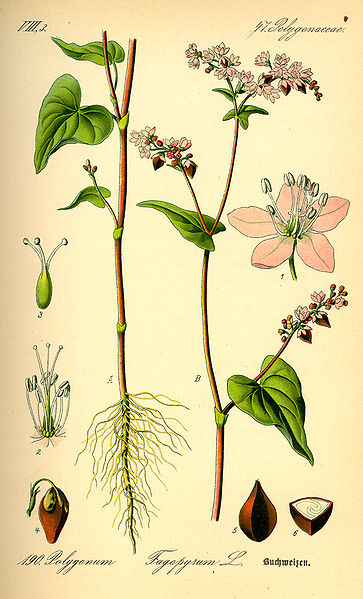 | |
| Line drawing of Common Buckwheat from wikipedia. Note the fruit in the lower right. |
 |
| The samara: winged achene of the maple |
The rest of the dry fruits we'll talk about are all quite similar to the achene save for one or two distinctions. For example, when an achene has "wings", it is called a samara. Samaras are usually produced by trees, and are probably familiar to most as the "helicopters" produced by maple trees.
Now if we an achene, but where the seed actually does adhere to the pericarp essentially making the seed and fruit indistinguishable, it's called a caryopsis. This is common to many grains and grasses.
Finally, the last fruit type we'll cover here is the nut, which is quite similar to the achene, but has a thick "stony" wall, and develops from a flower with a compound ovary. A lot of what we consider to be nuts, at least culinary speaking, such as walnuts, are actually drupes. Acorns and hazelnuts however are examples of true botanical nuts. I'm embarrassed to admit I don't actually have any pictures of acorns right now, but I assume you're at least fairly familiar with what they look like.
Well, that should conclude our introduction to fruits. There are a few types I skipped to keep it simple, but I hope this at least gives you an overview on the diversity of fruit types as well as some of the characteristics used to distinguish them. I'll probably revisit these concepts in context if talking about a particularly ornamental fruits (much as I did with the winterberries).
Until then, if there's any botanical/horticultural questions you're curious about, go ahead and give a reply/message/contact me on Google+, whatever, and I'll try and answer it in a post!


No comments:
Post a Comment